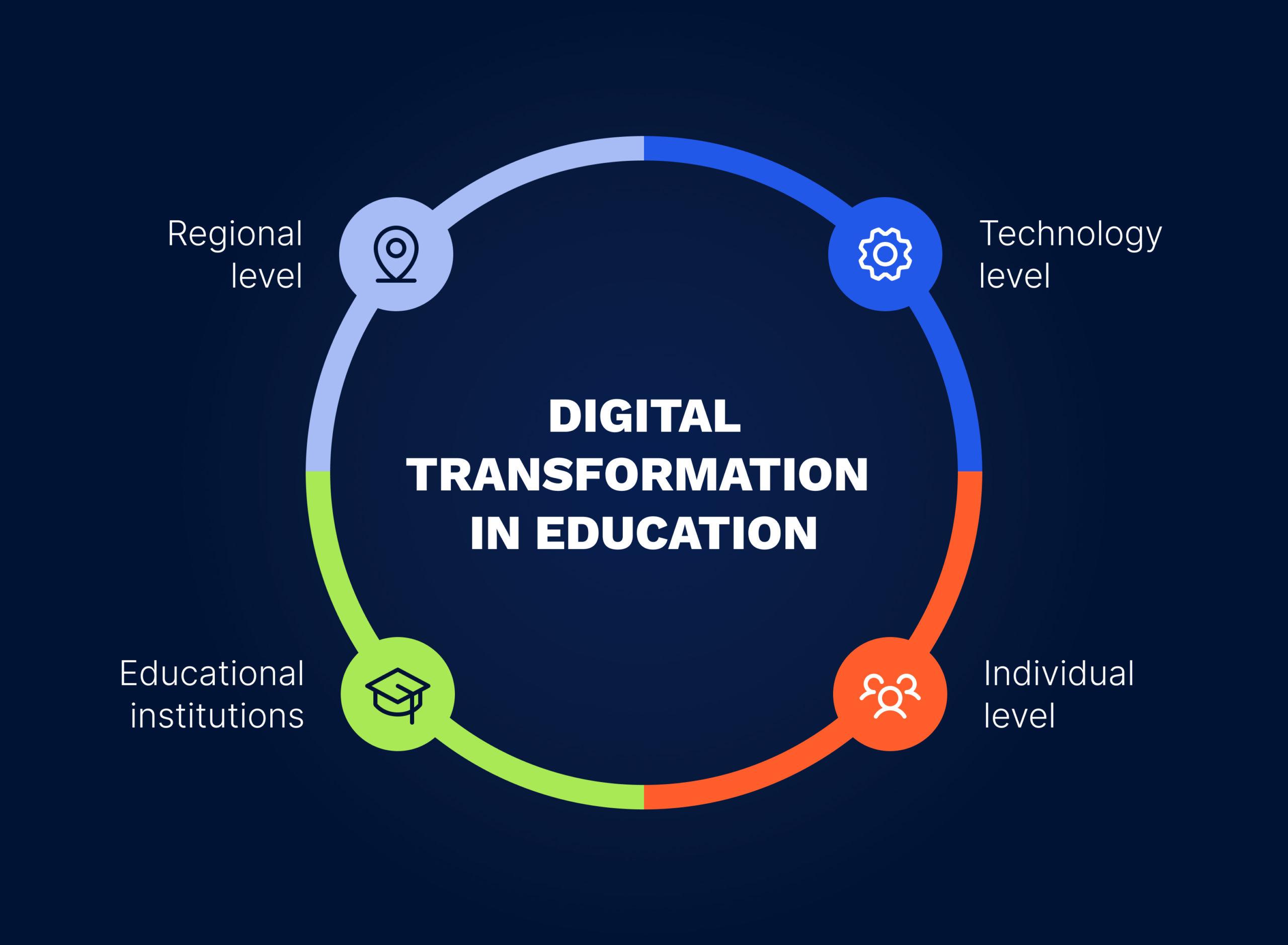Exploring DigiLife Digital Transformation for Education
Embark on a journey into the realm of DigiLife Digital Transformation for Education, where innovation meets learning in an exciting and transformative way. Uncover the impact of cutting-edge technologies on the educational landscape and discover the key benefits that come with embracing this digital evolution.
Overview of DigiLife Digital Transformation for Education
DigiLife Digital Transformation in the education sector refers to the integration of digital technologies and tools to enhance the teaching and learning experience. It involves the use of digital platforms, online resources, and interactive technologies to revolutionize traditional educational methods.
Impact of DigiLife Digital Transformation in Education
- Personalized Learning: Digital tools allow for customized learning experiences tailored to individual student needs.
- Enhanced Collaboration: Students and teachers can easily collaborate on projects and assignments using online platforms.
- Remote Learning: Especially important during the pandemic, digital transformation enables seamless remote learning opportunities.
- Data-Driven Decision Making: Educational institutions can use data analytics to track student progress and performance for better decision-making.
Benefits of Implementing DigiLife Digital Transformation
- Improved Student Engagement: Interactive digital tools make learning more engaging and fun for students.
- Enhanced Accessibility: Digital resources make educational materials accessible to students regardless of their location.
- Cost-Efficiency: Digital tools can reduce the costs associated with traditional educational resources and materials.
- Preparation for the Future: Implementing digital transformation prepares students for the digital skills required in the modern workforce.
Technologies Driving DigiLife Digital Transformation in Education

Artificial intelligence (AI), cloud computing, and the Internet of Things (IoT) are the key technologies driving the digital transformation in education through DigiLife. These innovative technologies are reshaping the way educators teach and students learn, creating more personalized and efficient educational experiences.
Role of Artificial Intelligence in Transforming Education
Artificial intelligence plays a crucial role in transforming education within the DigiLife framework. AI-powered tools such as chatbots, virtual tutors, and personalized learning platforms analyze student data to provide customized learning experiences. By leveraging AI, educators can identify individual learning needs, track student progress, and offer targeted support to enhance student outcomes.
AI also automates administrative tasks, freeing up educators’ time to focus on teaching and mentoring students.
Impact of Cloud Computing on Educational Processes
Cloud computing has revolutionized educational processes within DigiLife by providing a scalable and cost-effective infrastructure for storing, managing, and accessing educational resources. With cloud-based learning management systems (LMS) and collaboration tools, students and educators can access course materials, participate in virtual classrooms, and collaborate on projects from anywhere, at any time.
Cloud computing also enables real-time data analytics, making it easier for educators to track student performance, identify trends, and tailor instruction to meet individual learning needs.
Revolutionizing Educational Experiences with IoT
The Internet of Things (IoT) is transforming educational experiences in the DigiLife framework by connecting physical devices and enabling data-driven decision-making. IoT devices such as smart boards, wearables, and sensors collect real-time data on student engagement, attendance, and learning behaviors.
This data is used to optimize classroom environments, personalize learning experiences, and improve educational outcomes. IoT also enhances campus security, streamlines operations, and enables remote learning opportunities, making education more accessible and engaging for students.
Implementation Strategies for DigiLife Digital Transformation in Education

Implementing DigiLife Digital Transformation in education requires a strategic approach to ensure successful integration and adoption. Educational institutions can follow certain steps to effectively incorporate DigiLife technologies into their existing systems and enhance the learning experience for students.
Best Practices for Integrating DigiLife Technologies
When integrating DigiLife technologies into educational systems, it is essential to follow best practices to maximize the benefits and minimize challenges. Some key best practices include:
- Conduct a thorough needs assessment to identify specific areas where digital transformation can make the most impact.
- Provide adequate training and support to teachers and staff to build their digital literacy skills and confidence in using new technologies.
- Develop a clear implementation plan with defined objectives, timelines, and milestones to track progress and ensure alignment with educational goals.
- Encourage collaboration and communication among stakeholders to foster a culture of innovation and continuous improvement.
- Regularly evaluate the effectiveness of DigiLife technologies and make adjustments based on feedback and outcomes.
Comparison of Implementation Approaches
There are different approaches to implementing DigiLife Digital Transformation in educational settings, each with its own advantages and challenges. Some common approaches include:
- Incremental Approach: Gradually introducing DigiLife technologies in stages to allow for smoother transition and adaptation.
- Big Bang Approach: Implementing DigiLife technologies across all areas of education at once to achieve rapid transformation but potentially facing resistance and operational disruptions.
- Hybrid Approach: Combining elements of incremental and big bang approaches to balance the pace of change with the need for comprehensive transformation.
- Collaborative Approach: Involving all stakeholders in the decision-making process and implementation to ensure buy-in and support for DigiLife initiatives.
Challenges and Solutions in DigiLife Digital Transformation for Education
Digital transformation in education comes with its own set of challenges that institutions need to overcome to ensure a successful transition. Let’s explore some common obstacles faced by educational institutions and strategies to address them during the implementation phase.
Challenges Faced by Educational Institutions
- Lack of Proper Training: Many educators and staff may not be familiar with the new digital tools and technologies, leading to resistance and inefficiencies in implementation.
- Resistance to Change: Some stakeholders within educational institutions may be hesitant to embrace new technologies, hindering the overall transformation process.
- Integration of Legacy Systems: Migrating from traditional systems to digital platforms can be challenging, especially when trying to integrate existing legacy systems with new technologies.
Solutions to Overcome Challenges
- Comprehensive Training Programs: Implementing thorough training programs for educators and staff to familiarize them with new digital tools and technologies can help alleviate resistance and improve efficiency.
- Change Management Strategies: Developing effective change management strategies to address resistance and foster a culture of innovation within educational institutions.
- Gradual Implementation: Gradually phasing in the digital transformation process can help ease the integration of legacy systems with new technologies, reducing disruptions.
Importance of Cybersecurity Measures
In the digital age, cybersecurity is paramount, especially in educational institutions that handle sensitive student data. Implementing robust cybersecurity measures is crucial to safeguarding information and ensuring a smooth digital transformation journey. Institutions should invest in firewalls, encryption tools, and regular security audits to protect against potential cyber threats and data breaches.
Summary

In conclusion, DigiLife Digital Transformation for Education offers a promising path towards a more efficient and effective educational system. By understanding the challenges, implementing strategic solutions, and harnessing the power of technology, educational institutions can pave the way for a brighter future of learning.